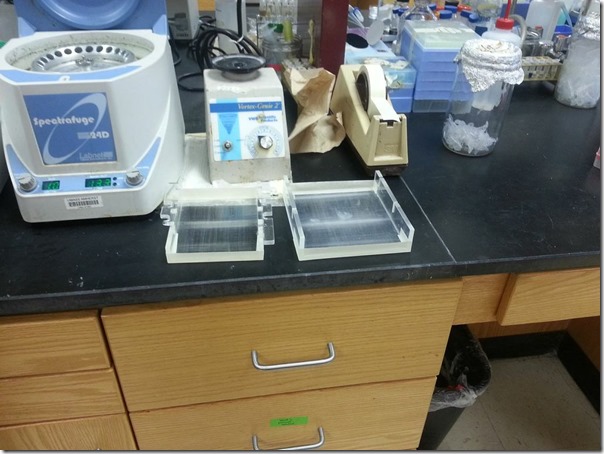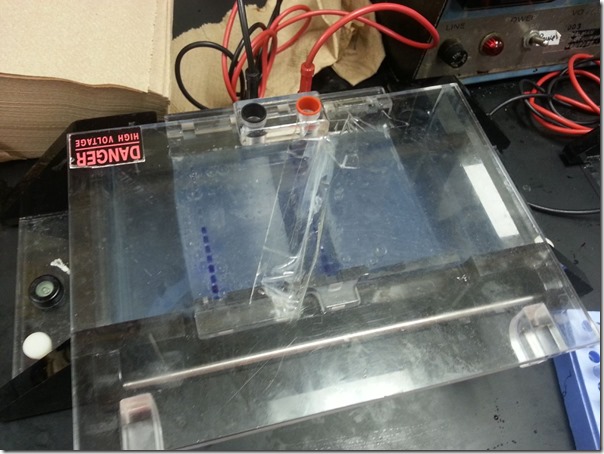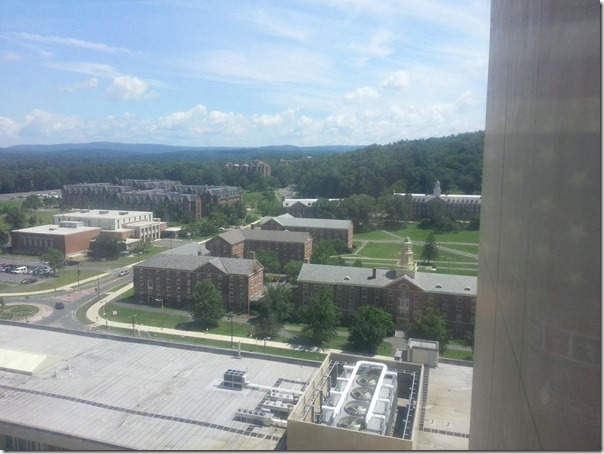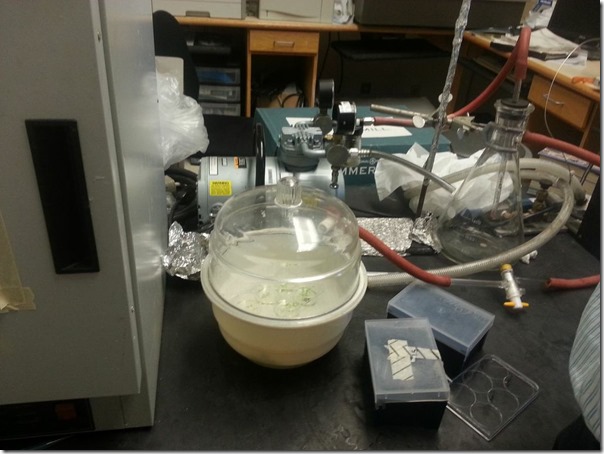Analyzing Gel results
Today started off with a lab meeting, so I was able to head in late after cleaning my house and starting to get ready for my trip to Seattle. I started in the laboratory by reviewing the procedures for running gels (gel electrophoresis). The lab meeting ran late, so I was able to review the other procedures and check on the GUS assay that we set up yesterday. I can see that the rk10p:GUS now has blue roots as well, meaning that the gene is being expressed there.
When the lab meeting ended, I started work on running gels based on the work that we did yesterday. The first step was preparing the gels. We used 1x TBA to set up our gels, heating the medium in the microwave and then pouring it into the gel containers to cool. We used plastic inserts to make sure that our gels had the appropriate wells.
Preparing gels for gel electrophoresis
While waiting for the gels to cool, we used dye to stain the DNA in each of the containers that had come from the PCR process. This is essential, because you want the DNA to show up so that you can view it in your gel.
We then used a micropippette to drop a very small amount of DNA into each of the wells in the gel. This will allow us to see which of the DNA samples is larger (moves slower through gel, will be nearest to well) and smaller (moves quicker through gel, will be further from well). DNA is negatively charged, so you place the negative end closest to the DNA wells, and the positive end away from the wells. It is crucial to keep all of the containers organized- so that you know which well corresponds with each sample.
Running a gel- notice wells (blue), negative lead (black) and positive lead (red)
While running the gels, we started preparing new samples for PCR. We first made new labels and labeled all of the plants so that we would know which sample came from each plant leaf. We then took these leaves off of the plants using forceps and placed them into different eppendorf tubes.
Labeled plants, ready for leaf extraction
We followed the same procedure for preparing our samples for PCR that we used yesterday- the whole process takes around 3.5 hours from start to useable DNA. In between preparing our new samples for PCR, we analyzed our earlier gels.





